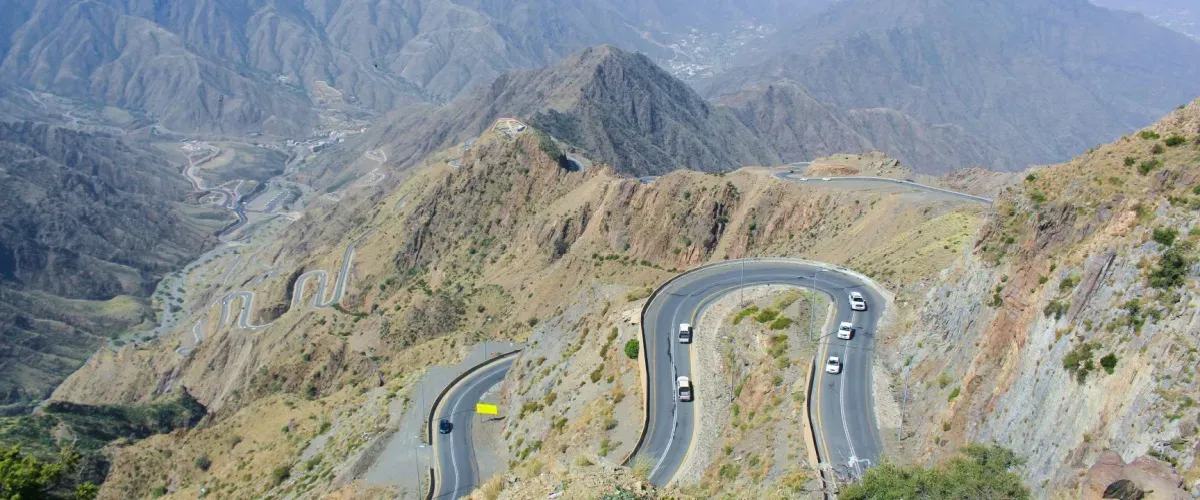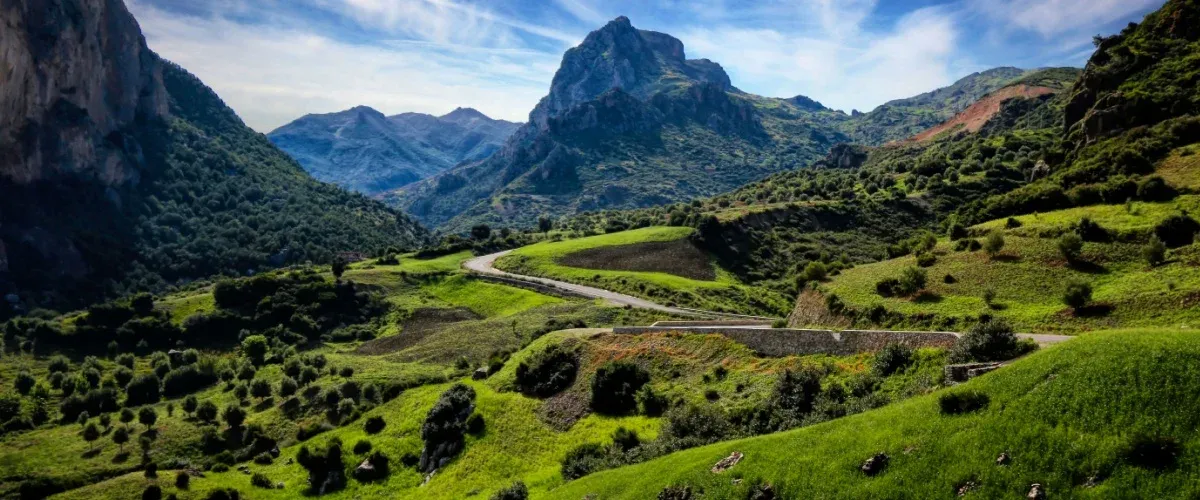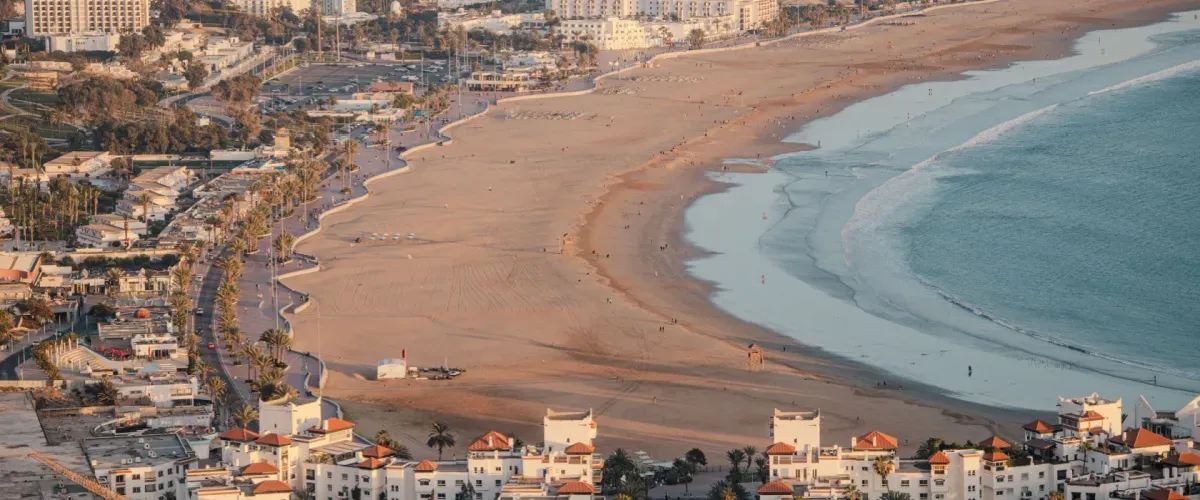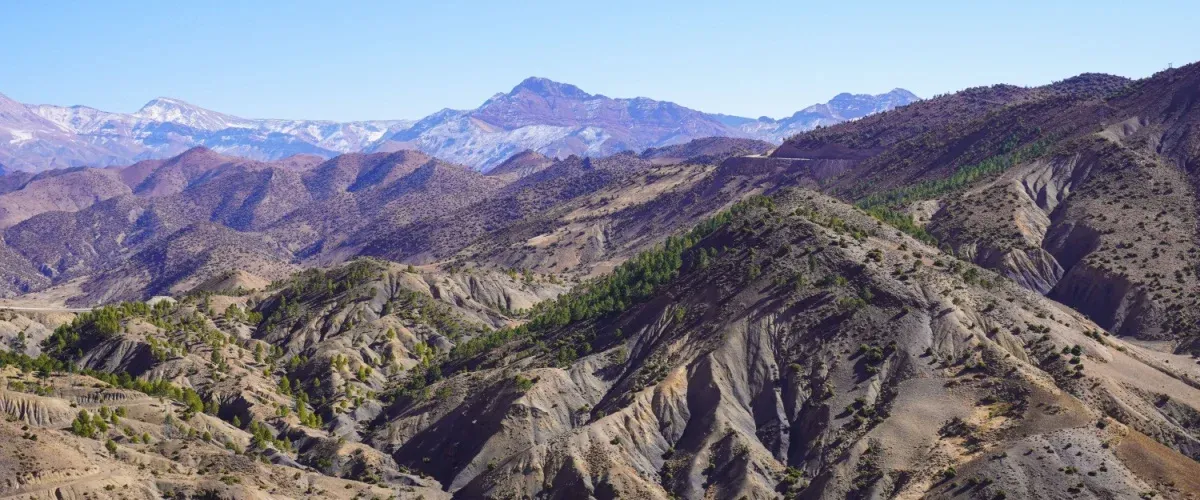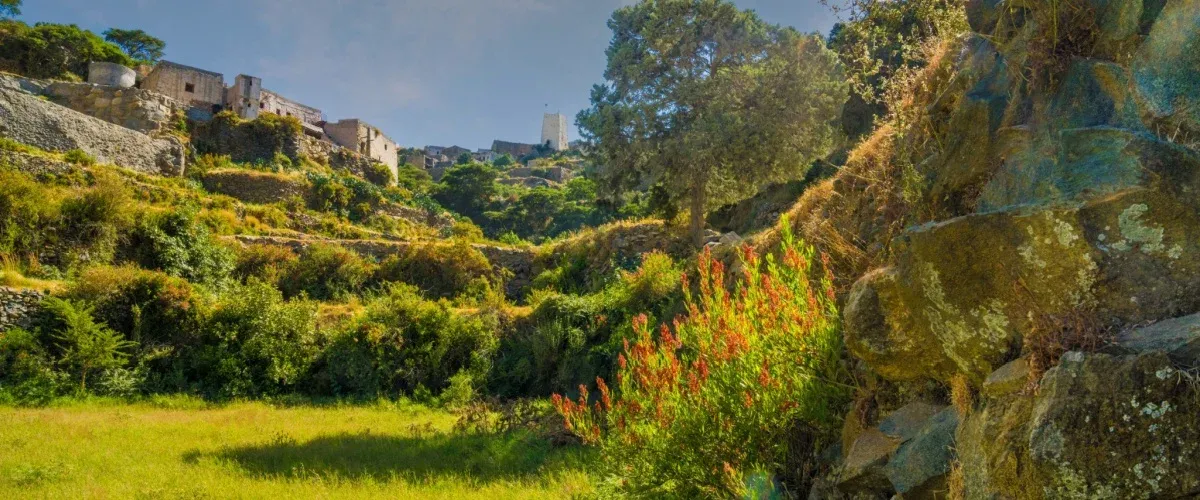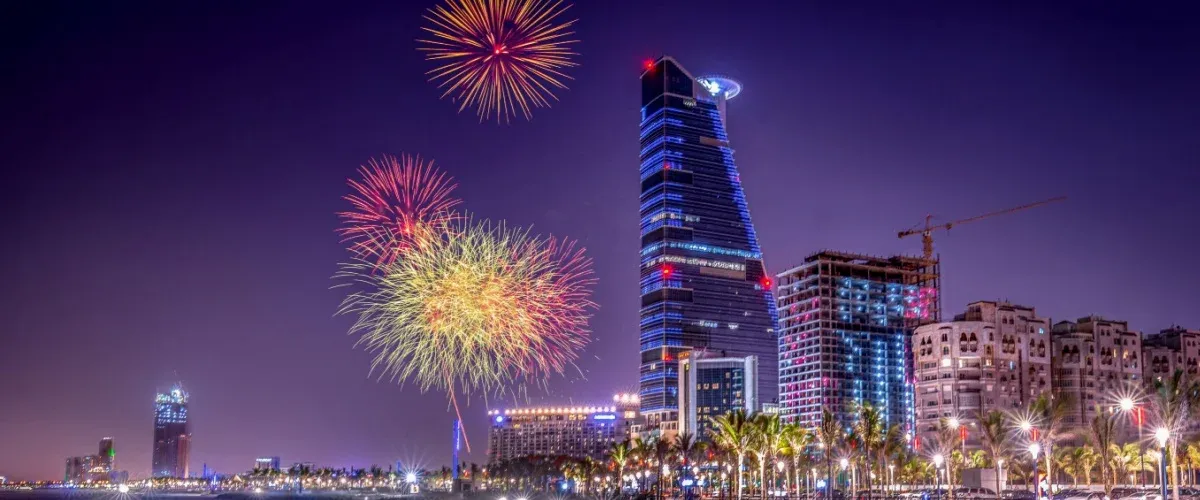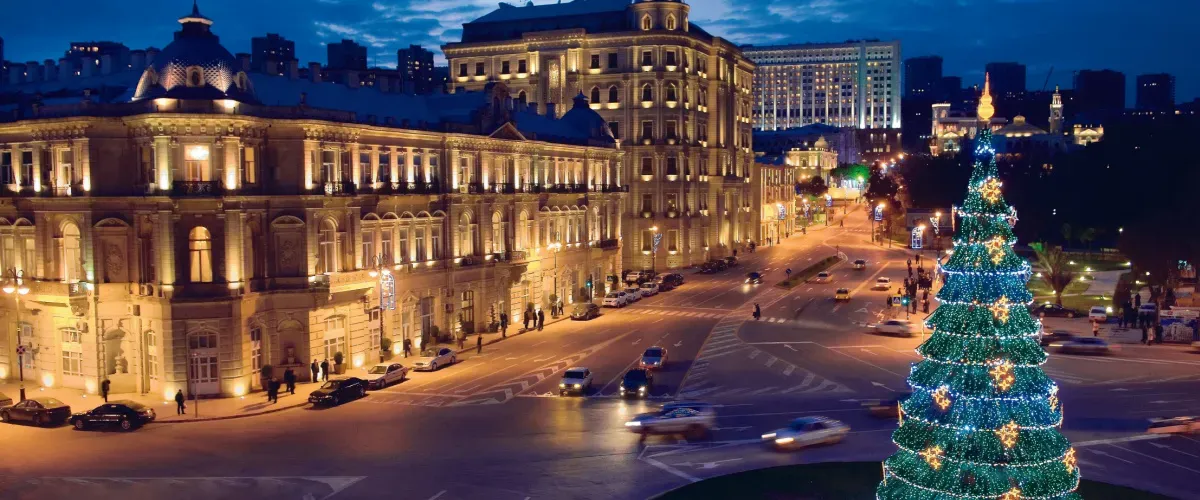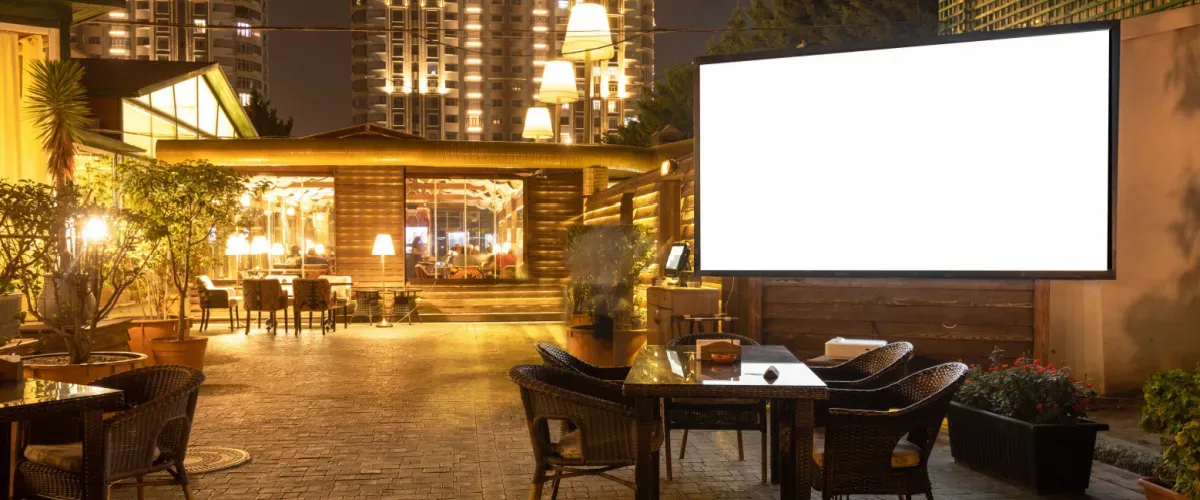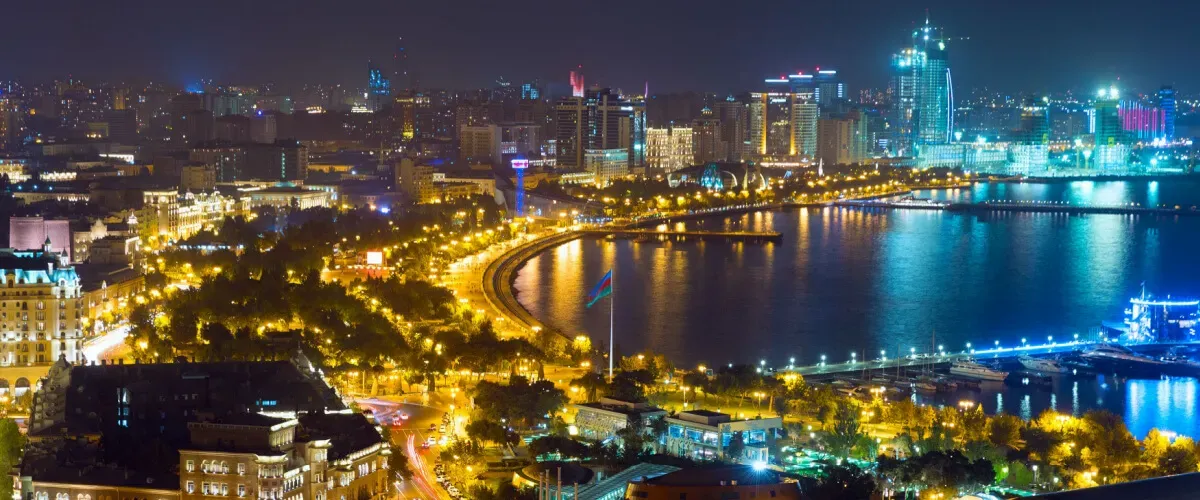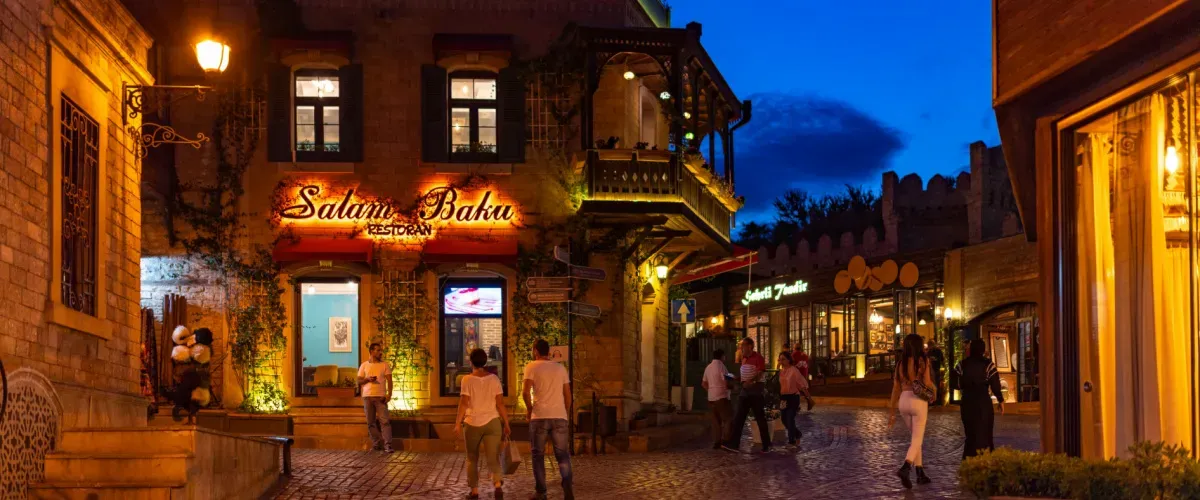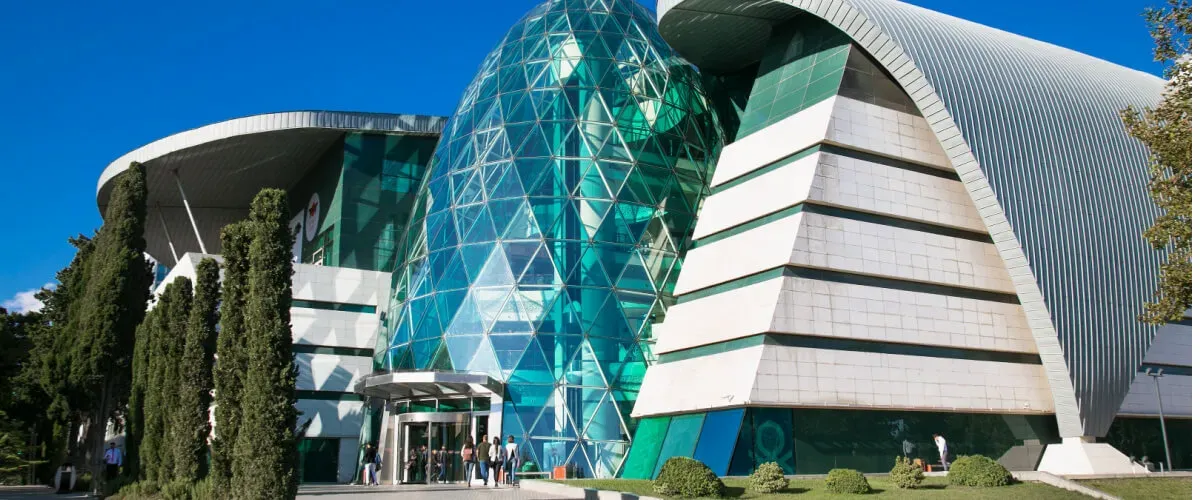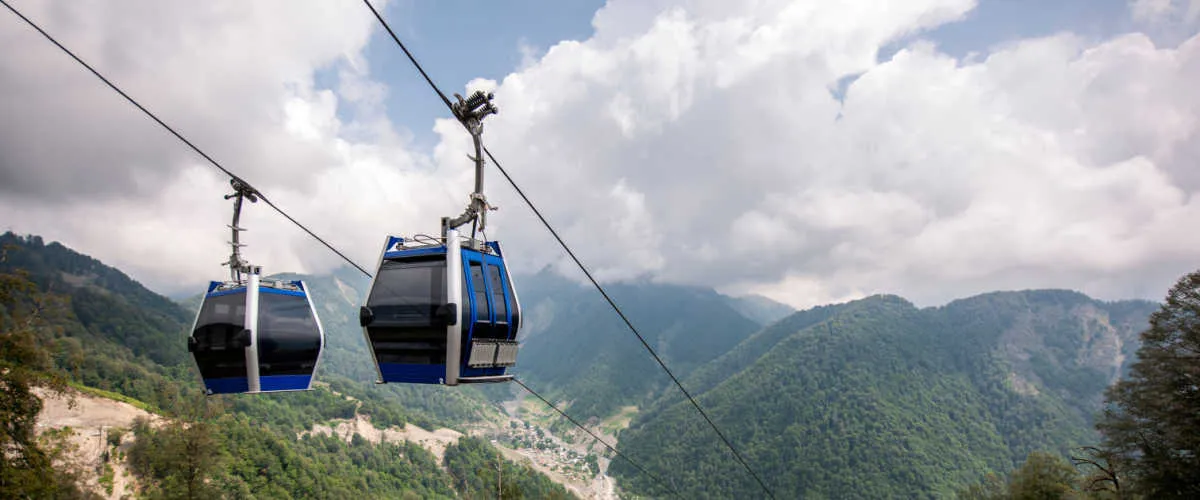Azerbaijan has numerous historic fortifications to impress even the least castle-curious person. From the clifftop isolation of the “lamp castle” Chirag Gala to the iconic cylindrical Maiden Tower in the center of Baku’s old city, Azerbaijan’s best castles reward visitors with stunning views and fascinating history. Explore our list of the best castles in Azerbaijan. There are a huge number of castles and fortresses in the country made to save the integrity of the country. One needs to visit these historical marvels to explore the history, culture, and heritage of Azerbaijan.
Best Castles in Azerbaijan: Magnificent Architecture of Medieval Fortress and Castles
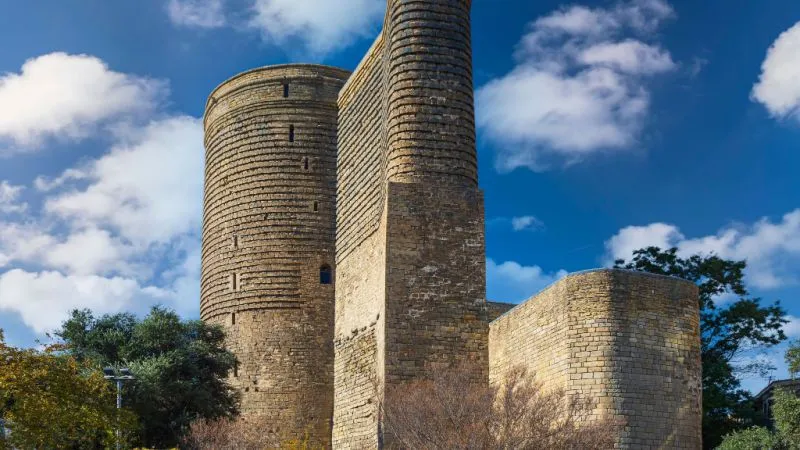
If we talk about a castle, castles are always strongly fortified, with high walls, and towers to provide security from the attack of the enemy, and grant privacy to the royals. Azerbaijan is home to hundreds of castles and forts in beautiful natural surroundings. The country which spans Asia and Europe and is bounded by the Caspian Sea and the Caucasus Mountains boasts have 5000-year-old history and if we talk about the ethnic political establishments, this territory stands from dates back to the BC. Here is a list of the best castles and fortress that can give you a proper glimpse of these castles in this blog and discover the histories and mysteries of the amazing castles in Azerbaijan.
- Alinja Castle
- Ramana Castle
- Shirvanshahs’ Palace
- Maiden Tower
- Chirag Gala
- Handaberd Fortress
- Sheki Fortress
- Shahbulag Fortress
- Baku Fortress
1. Alinja Castle

The Alinja Castle in Azerbaijan is frequently referred to as the "Machu Picchu of the Caucasus" by tour guides and regionals. One can visit these beautiful breathtaking surroundings only if having good health with lung capacity and some degree of fitness. The Peruvian site is vast and green, whereas Alinja is arid, rocky, and smaller in scale.
A visitation "slot" does not need to be reserved in advance because it is also less known. On some days, you might even be the sole person atop Snake Mountain (Ilan Dag). The Iranian Massif and the distant Araz Reservoir both reflect the magnificent sunset in the distance. Just be sure to pick the appropriate time of year to climb. While the location is beautiful in the winter, snow can make it difficult, if not impossible, to access so come between April and October.
Location: West of Khanega village, Azerbaijan
Timing: N/A
2. Ramana Castle
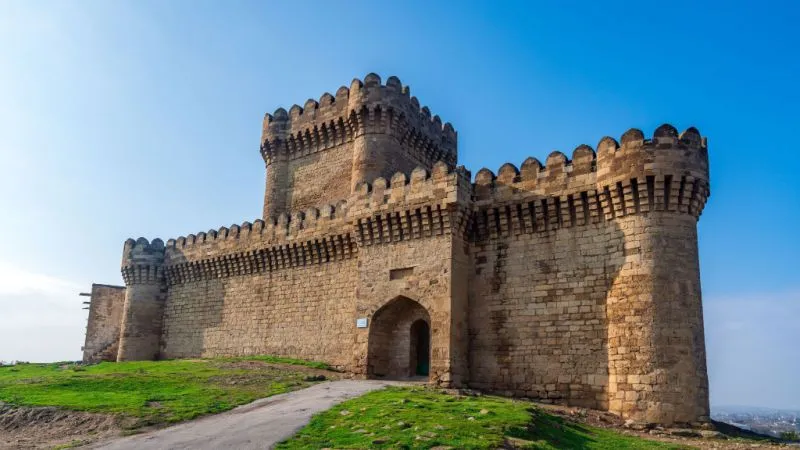
Another stronghold from the 13th and 14th centuries can be found in the nearby village of Ramana. Built on a tall rock, this spectacular monument can be seen from nearby. There are documented accounts of an underground road connecting the Ramana with the Maiden Tower. If we talk about other Azerbaijan castles, Raman has a long-rectangular design. Four wings make up the rectangular tower; two of the wings are covered in wood, and one of them has a stone dome over it which are not accessible right now. There is a twisting staircase between the floors.
The monument is entirely built of white limestone. Although the tower's remnants were not well-preserved, the researchers hypothesized that the 14th century was created based on the tower's structure and the nature of the plan. But the stronghold appears to be a four-story fortress in Mardakan.
Location: FX4J+F22, Baku, Azerbaijan
Timings: N/A
3. Shirvanshahs’ Palace

The Shirvanshahs' Palace (also known as the Palace of the Shirvanshahs) is a castle and complex from the 15th century located in Baku, the capital of Azerbaijan. Shirvanshahs' Palace was initially built by king Shirvanshah Khalilulla I and his son Faruk, and it had both regal and religious significance. The palace mosque, the Shirvanshahs' mausoleum, and the tomb of astrologer Seyyid Yahya Bakuvi are also part of its structure. When Faruk was killed in battle in 1501, construction was put on hold and since then it was left unfinished. During the Russian invasion in the 18th century, it was also damaged.
Visitors at Shirvanshahs' Palace enter through the palace's central courtyard, which leads to the residential areas. Many portions of the palace are either in ruins or have undergone unsympathetic renovations. The Palace of the Shirvanshahs, a UNESCO World Heritage Site, is home to numerous exquisite buildings and carvings.
Location: 9R8M+CCX, Baku, Azerbaijan
Timing: Everyday- 10 AM to 6 PM
Suggested Read: Malls in Azerbaijan: To Have a Shopping Experience Like Never Before
4. Maiden Tower Fortress
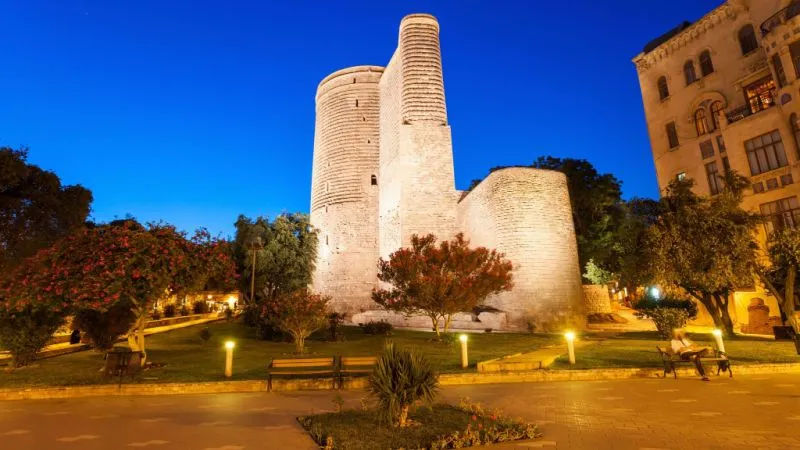
Maiden Tower is in the historic heart of Baku and is one of the most famous castles in Azerbaijan. The eight-story cylindrical structure known as Maiden Tower, also known by its Azeri name Qiz Qalasi. The Maiden Tower's base is thought to have been constructed in the sixth or seventh century, while the tower's upper levels and the outlying addition were added in the mid-twelfth century. Although many may create fancy tales and persuade you otherwise, the name Qiz Qalasi more accurately translates as "Virgin Tower" and refers to its impenetrability rather than any female overtones.
Even for its time, the tower is incredibly sturdy. Its lifespan has been aided by the walls and foundations, which are 5 meters thick at the base and slightly thinner as it rises. The tower is still used as one of Azerbaijan's national symbols and can be shown on its currency. The public can now visit Maiden Tower, a UNESCO World Heritage site. Visitors can ascend its stairs, some of which are original and some of which are more recent. The visitor has to pay a nominal fee to view its exhibits of vintage photographs and finish at its observatory, which offers a stunning city view.
Location: Maiden Tower, Baku, Azerbaijan
Timing: 9 AM to 6 PM
Suggested Read: Skiing in Azerbaijan: Explore the White Winter Paradise
5. Chiraggala Fortress
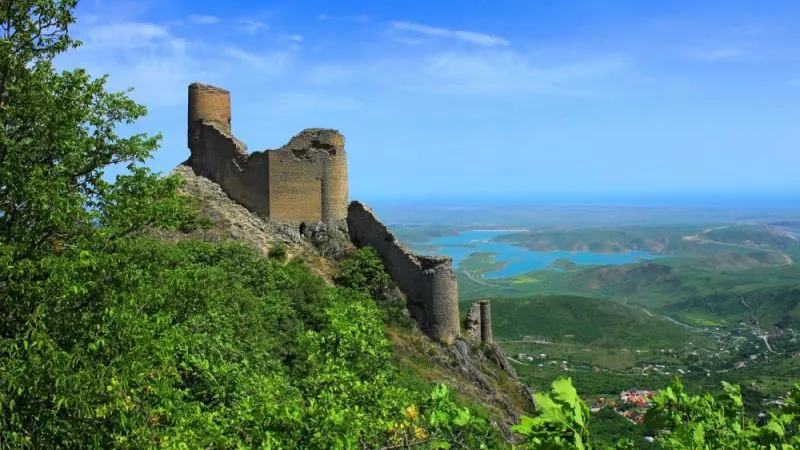
The Caspian Shore Defensive Constructions' Chiraggala castle, which is situated in the Devenchy region's Chirag hamlet, is the most well-preserved of the group. This fort is built by the Sassanid Persians in the 5th century AD. The fort is situated at the mountain in the Guba Forest in the capital city of Baku. By burning torches, its people could alert friends to unforeseen enemy invasions. Its name, "Chirag Gala," which in Azerbaijani means "lamp castle," is most likely derived from this. In terms of architecture, this castle is a true gem.
The castle is mainly made of local stones and baked bricks. This fort is made of a triangular shape with 17 towers that help to see the surrounding coastal plains. The striking casing pipes and other signals suggest that the water was filtered after being drawn from nearby mountain fountains. Thanks to undiscovered underground waterways, Chiraggala has had access to drinking water for a very long time. Exploring the scientific construction of this castle is undoubtedly one of the most interesting things to do in Azerbaijan. During the 18th century, this fort was used as one of the main defensive structures. If you will visit this castle, you will be rewarded with great views of the surrounding landscape.
Location: 3WQJ+4MF, Sabran, Azerbaijan
Timing: Everyday 24 hours
6. Handaberd Fortress
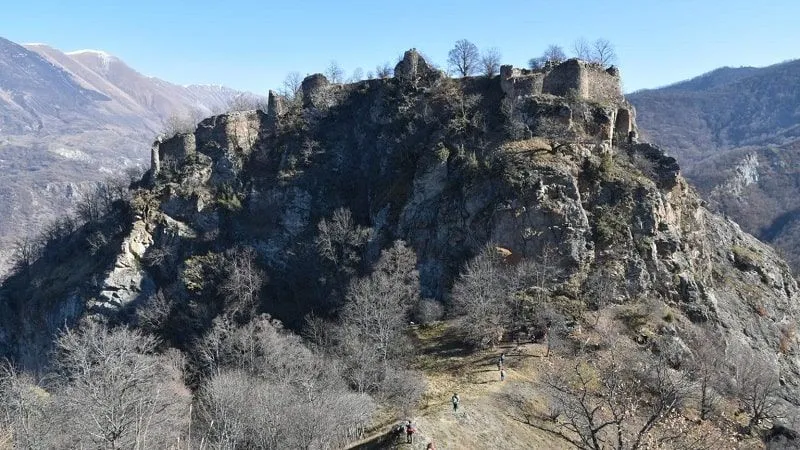
Thinking of planning to visit Azerbaijan, the castle tourism would be the best choice for history and mystery lover. Azerbaijani castle Handaberd was constructed along the Levçay River's bank by Atnerseh I of Armenia as his main palace in the ninth century. Movses Kaghankatvatsi, an Armenian historian, claims that Prince Atnerseh of Khachen constructed Handaberd in the second half of the ninth century. According to Kaghankatvatsi's History of the Country of Albania from the 10th century, the name of the structure is "Handu berd”. Handaberd, Atnerseh's main mansion, also functioned as a jail. Handaberd was founded at a tall mountain peak, 600 meters from the Levçay River's right bank. It is positioned above the Ayrm Gorge and encircled by trees. Archaeologists have discovered early human habitation in the area's caverns.
After the stronghold was initially built, it was significantly expanded. According to an inscription on a memorial stele at a nearby Armenian monastery, Handaberd belonged to prince Hasan I Vakhtangyan between 1142 and 1182. The castle has five or six wells, walls that are on average 1.3 meters thick, and its main gate provides entry. On the nearby mountains, smaller castles are acting as satellites, such as Pahak, Garavul, and Jomard.
Handaberd also known as Lev Castle, derives from the Armenian name for the Levçay River.
Location: Kalbajar District, Azerbaijan
Timings: N/A
Suggested Read: Places To Visit in Georgia: From The Snow-Tipped Peaks of Svaneti To The Shimmering Black Sea
7. Sheki Fortress

The independent Sheki Khanate was headquartered in the Azerbaijani city of Sheki, which served as the khan's castle. It is situated in the southern Greater Caucasus Mountain range in northern Azerbaijan. Sheki Khan Haki Celebi erected Sheki Fortress in large part during his rule (1743-1755). The Sheki Khanate's capital, Sheki (Shaki), served as the khan's stronghold until it was absorbed by the Russian Empire in the 19th century. The fortress has multiple defensive bastions, as well as northern and southern gateways.
The fortress walls, which measure 1,300 meters in length and are 2.2 meters thick, were enclosed by about 40 houses. There used to be a winter palace, family homes for the khan, and servant quarters in Sheki Fortress. The castle housed the city's public and commercial buildings at the height of the khanate.
Only the palace of the Sheki khans and its pool and plane trees are still standing. Muhammed Hasan Khan constructed The Khan's Palace in 1797 to serve as the residence of the Sheki kings. Between 1958 and 1963, the fortress underwent a major restoration. In 2019, UNESCO listed it as a World Heritage Site.
Location: Sheki, Azerbaijan
Timings: N/A
Suggested Read: Places To Visit In Qatar For The Stunning Skylines And Attractions
8. Shahbulag Fortress
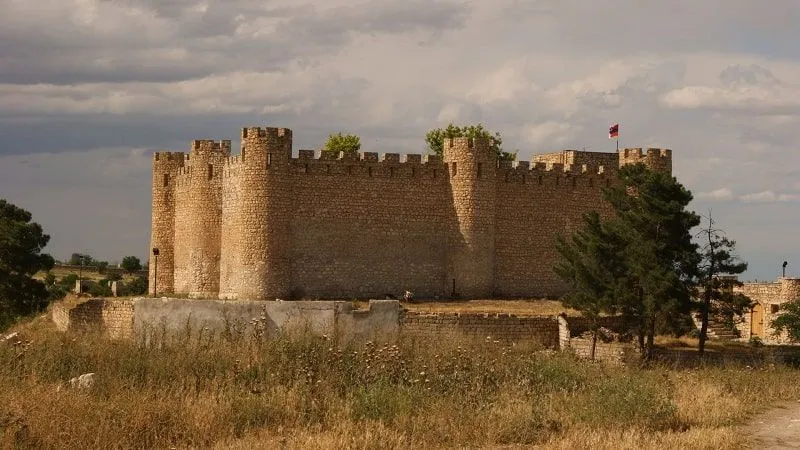
Tarnakut Fortress, also known as Shahbulag Fortress, was constructed in the 18th century by Karabakh Khan Panahali Khan in the years 1751–1752. The Shahbulag Fortification is the second fortress constructed inside the borders of the Karabakh Khanate. Before the Bayat castle was constructed, the Shahbulag fortress served as the Karabakh khanate's administrative hub. Although the defensive castle was initially utilized as a home, it was later only used as a watch station. The structure, known as Shahbulag Castle in scientific literature, was the interior of a massive castle complex.
The tops of the castle's towers and walls were slightly thinner, and they were complimented by several labyrinths and fangs that are typical of fortifications. The towers are 8.5 meters tall, while the walls are 7 meters tall. The fortress's entrance was situated in the center of the eastern wall and was guarded by two nearby two-story towers from the outside. The khan's quarters were probably on the top floor of this tower. From the castle courtyard, a stone stairway leads to the room. Recently, the fortress has served as an Armenian church.
Location: 3W94+G8C, Shahbulag, Azerbaijan
Timings:
- Monday to Friday- 24 hours
- Saturday to Sunday- Closed
Suggested Read: Places To Visit In Saudi Arabia: Top Attractions To Uncover The Mystical Vibes of This Arabian Country
9. Baku Fortress
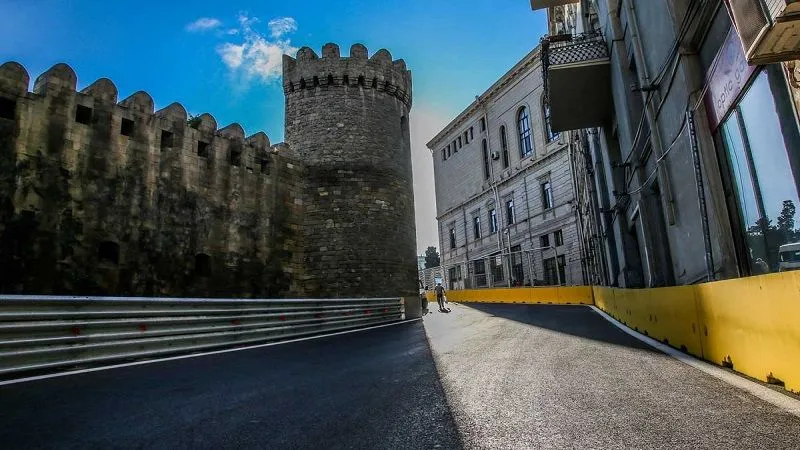
Baku is the largest city on the coast of the Caspian Sea and has a unique personality making it one of the best places to visit in Azerbaijan. Like all the other forts, Baku Fortress was also built to secure the developed city from foreign invasions. Like all the other medieval cities of the world, the building made within the castles and fortresses were defensive. The city's urban model gave the impression of a true maze. Large squares and broad streets progressively became narrower and smaller in a geometric pattern that allowed citizens to fully participate in defensive efforts. The walls of the old fortress in Baku are still standing today, preserving the historic district's medieval appearance with its numerous winding alleys and streets.
The Baku Fortress complex includes the Baku Fortress Wall. It was constructed somewhere around 1139 under the direction of the eighteenth independent Shah of Shirvan Shirvanshah Manuchohr III. When Russia occupied the nation in 1888, these walls were dismantled, and only Baku Fortress Wall was left. In the year 2000, the wall and the rest of the Baku Fortress complex were inducted into the UNESCO World Cultural Heritage List.
Location: Baku, Azerbaijan
Timing: N/A
Suggested Read: Places to Visit in The Middle East: Top Cities Brimming With Diverse Culture and Traditions
Perhaps the best representation of Azerbaijan's extensive medieval past is seen in its collection of castles and fortifications. Beautiful and firm fortresses constructed in the beginning are majestical and spectacular. They were primarily constructed for protection against invaders. They provided safety and shelter from the enemy for military men and the public. To protect vital routes, castles in Azerbaijan were built in key sites of the country. Explore the most spectacular forts from the Land of Fire and across history by spanning time and space.
Castles in Azerbaijan - FAQs
The Alinja Castle in Azerbaijan is frequently referred to as the "Machu Picchu of the Caucasus" by tour guides and regionals. One can visit these beautiful breathtaking surroundings only if having good health with lung capacity and some degree of fitness.
The Persian translation of the ancient word Aturpatakan is "A spot where the sacred fire is preserved." According to legend, Prometheus traveled to the Caucasus Mountains after stealing fire from the Gods. The country received its name mostly as a result of the eternal fires that have burned throughout history in the mountains of Azerbaijan.
One can get a broader glimpse of the history and heritage of Azerbaijan by visiting these castles:
- Mardakan Castle
- Alinja Castle
- Ramana castle
- Shirvanshahs’ Palace
- Maiden Tower
Built towards the tail end of the 14th century Mardakan Castle is one of the most famous castle forts in Azerbaijan. This castle has served as a crucial piece of its defense system, state protection, and restoration in the past. As a result of its proximity to Baku, it attracts a lot of tourists.
Azerbaijan is a beautiful country with marvelous tourist destinations. Apart from the historical monuments, one can visit:
- Heydar Aliyev Cultural Center
- Baku Old City
- Baku Boulevard
- Flame Towers
- Azerbaijan National Carpet Museum
There are plenty of things to do and explore in Azerbaijan during your tour, some of them are as below:
- Hiking in the Caucasus Mountains
- Discover the mud volcanoes
- Water sports
- Skiing in the snow
- Shopping for traditional Items in local markets
- Explore the nature reserves
There are an estimated 400 or so mud volcanoes in the nation. Though they never reach the magnitude of a typical volcano. The largest mud volcanoes in the world are Boyuk Kanizadag and Toraghai, and both are in Azerbaijan.
Although Azerbaijan identifies itself as a Muslim country it is a secular country and there are no religious restrictions here. One should consider below tips while traveling:
- Get yourself registered at the State Migration Service
- The best way to travel within Baku city is via metro
- Don’t litter while traveling in Azerbaijan
- Carry your passport everywhere




